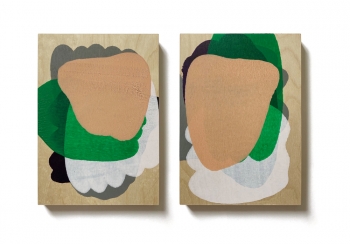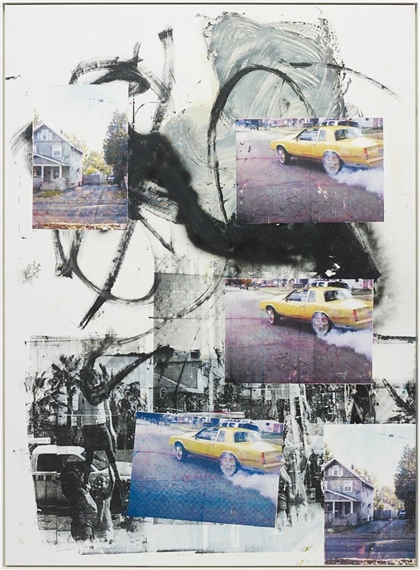4th May
Preparing for presentation of my work, I had think hard about how I wanted to attract people to my work. I needed to make it exhibition worthy compared to the wall I created last week. Noticing the incredible amount of chaos because of how busy my work has become I decided I needed to start with a clean palette. I striped down all my work from the past three weeks and sorted out the pieces I liked or wanted to keep up and the ones that were old or just didn’t work together. I was then able to work out some of the aspects about each one I wanted to create in a new art work for. This lead me to create these two down below.


I used the photocopier to copy and in large the left over marks from my mono prints. I used my scraps because I really loved how the fuzzy marks that were left on my page from pressing my hand on the paper and the ink, looked. To me it reminds me of TV static or the feeling of a lost connection. I used the same colour scheme again because I loved how the colours make the work come together while them also giving off a 3D movie effect feel. It makes it almost had for the eyes to understand what is going on in the image which also keeps people interest, almost curious. I also photocopied some of the left over painters tape I had and duplicated it multiple times which I really enjoyed the look of too.
I soon decided on pining up my palimpsest art works that I enjoyed the most but this time separating them to look more like display. By the end of the day I was very content about how my wall turned out.

5th May
I felt very happy with how my wall turned out yesterday and didn’t have much more to add. I decided that I should use better paper and experiment on the quality it has when photocopied. I ended up using thicker and more durable paper compared to the cartridge paper I used from the printer before. I noticed how much clearer and professional it looked.
I also got some advice on how I could make the presentation more exciting. I pulled out some of the pins that was holding up my work and replaced it with the same tape I was using previously. instead of having my art work pressed right up to the wall I pulled them further away this created the same effect I had with my previous collaged works. Coming together I was really happy with my product and ready for the final expedition tomorrow.






























































